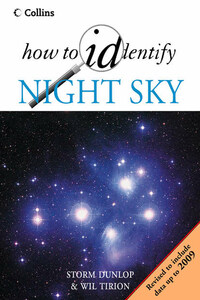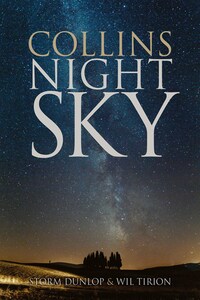Copyright
William Collins
An imprint of HarperCollinsPublishers 1 London Bridge Street London SE1 9GF
WilliamCollinsBooks.com
This eBook edition published by William Collins in 2016
www.collins.co.uk/starsandplanets
First published in 1984 as Collins Pocket Guide: Stars and Planets This revised and updated fifth edition published in 2017
Text © Ian Ridpath 1984, 1993, 2000, 2007, 2017
Sky charts and diagrams © Wil Tirion 1984, 1993, 2000, 2007, 2017
Cover photograph © NASA
The authors assert their moral right to be identified as the authors of this work. All rights reserved.
A catalogue record for this book is available from the British Library.
All rights reserved under International and Pan-American Copyright Conventions. By payment of the required fees, you have been granted the non-exclusive, non-transferable right to access and read the text of this eBook on-screen. No part of this text may be reproduced, transmitted, downloaded, decompiled, reverse engineered, or stored in or introduced into any information storage and retrieval system, in any form or by any means, whether electronic or mechanical, now known or hereinafter invented, without the express written permission of HarperCollins Publishers.
Source ISBN: 9780008239275
Ebook Edition © November 2017 ISBN: 9780008239268
Version: 2017-11-28
CONTENTS
Cover
Title Page
Copyright
Section I
Introduction
The star charts
Northern and southern hemisphere skies
Monthly skies throughout the year
The 88 constellations: Andromeda to Vulpecula
Section II
Stars and nebulae
Double and multiple stars
Variable stars
Milky Way, galaxies and the Universe
The Sun
The Solar System
The Moon
Moon maps
Eclipses of the Sun and Moon
Mercury
Venus
Mars
Jupiter
Saturn
Uranus, Neptune and beyond
Comets and meteors
Asteroids and meteorites
Astronomical instruments and observing
Index
Acknowledgements and sources
About the Authors
About the Publisher
SECTION I
NASA AND THE HUBBLE HERITAGE TEAM (STSCI/AURA)
INTRODUCTION
The night sky is one of the most beautiful sights in nature. Yet many people remain lost among the jostling crowd of stars, and are baffled by the progressively changing appearance of the sky from hour to hour and from season to season. The charts and descriptions in this book will guide you to the most splendid celestial sights, many of them within the range of simple optical equipment such as binoculars, and all accessible with an average-sized telescope of the type used by amateur astronomers.
It must be emphasized that you do not need a telescope to take up stargazing. Use the charts in this book to find your way among the stars first with your own eyes, and then with the aid of binoculars, which bring the stars more readily into view. Binoculars are a worthwhile investment, being relatively cheap, easy to carry and useful for many purposes other than stargazing.
Stars and planets
In the night sky, stars appear to the naked eye as spiky, twinkling lights. Those stars near the horizon seem to flash and change colour. The twinkling and flashing effects are due not to the stars themselves but to the Earth’s atmosphere: turbulent air currents cause the stars’ light to dance around. The steadiness of the atmosphere is referred to as the seeing. Steady air means good seeing. The spikiness of star images is due to optical effects in the observer’s eye. In reality, stars are spheres of gas similar to our own Sun, emitting their own heat and light.
Stars come in various sizes, from giants to dwarfs, and in a range of colours according to their temperature. At first glance all stars appear white, but more careful inspection reveals that certain ones are somewhat orange, notably Betelgeuse, Antares, Aldebaran and Arcturus, while others such as Rigel, Spica and Vega have a bluish tinge. Binoculars bring out the colours more readily than the naked eye does. Section II of this book, explains more fully the different types of star that exist.
By contrast, planets are cold bodies that shine by reflecting the Sun’s light. They too are described in more detail in Section II, from here onwards. The planets are constantly on the move as they orbit the Sun. Four of them can be easily seen with the naked eye: Venus, Mars, Jupiter and Saturn. Venus, the brightest of all, appears as a dazzling object in the evening or morning sky. Charts showing the positions of Mars, Jupiter and Saturn for a 5-year period can be found on the HarperCollins website: www.collins.co.uk/starsandplanets
About 2000 stars are visible to the naked eye on a clear, dark night, but you will not need to learn them all. Start by identifying the brightest stars and major constellations, and use these as signposts to the fainter, less prominent stars and constellations. Once you know the main features of the night sky, you will never again be lost among the stars.












